For a reason unbeknown to me the Winter of 2010-11 and Citrous Cakes are not meant to be in my household. At the beginning of winter I went through two or three trials of orange and polenta cake which resulted in a good tasting cake but the texture wasn’t right. Yesterday my day was a washout with two attempts at a Clementine Cake recipe. Now, I take full responsibility for the Orange and Polenta cake because I was trying to develop my own recipe and with that sort of playing around I fully expect to hit a few failures but yesterday it was not my fault in the least.
I was following a recipe in a magazine for a fatless sponge clementine cake, they have it decorated with segments of clementines…and now I know why…to hide the disaster of what happen to me, the shot of the cake is bird-eye view, no photo of the side of it...hummm it makes sense now! My idea was to drizzle the fatless sponge with some clementine icing over it.
On my first attempt I diverted a little from the recipe, added half teaspoon of baking powder because I was trying to aim for an extremely superlight cake. When the cake went from beautifully risen while in the oven to suddenly collapsing I thought…ok I was asking for trouble. At first I wondered if opening the door of the oven towards the end of baking had caused the sudden shrinkage but having thought through the process of cake baking this can’t be true.
Towards the end of baking time of a cake it should be set in its structure to support its shape, the eggs, sugar, flour are suppose to be cemented by then, opening the oven door to check if it’s cook should not have a disastrous affect on it. To my mind I concluded it had to be the extra raising agent I added, on top of the whisked six egg whites I just overkilled it, making the cake structure expand too much to the point it could not support itself and the collapse was inevitable. Well no…this wasn’t the answer…
The failed Orange & Polenta cake
My first attempt at the Clementine Fatless Sponge
I had a sad looking cake but one that taste rather lovely…far superior to any fatless sponges I’ve tasted, the strong taste from doubling the amount of clementine zest plus the juice made you forget you were eating the normal cardboard fatless sponge, it tasted so nice it made me want to succeed with this recipe and that’s why I went for a second trial only this time following the recipe.
This is a very straight forward cake, whisk egg yolks with the sugar and zest until thick. Add the juice of clementines and the flour and whisk again.
In a separate bowl whisk the egg whites until stiff and fold into the egg yolk mixture. Pour into a buttered and floured tin. Bake.
As you can see from my second attempt it managed to come out of the oven beautifully risen…but within a period of a minute it had collapsed again…it was like watching the sinking of a ship!
This second attempt it was sightly more successful from not having added the extra baking powder, the texture was fully airy and light but obviously now in half of its size.
I ate some while still warm and it was so delicious, light, fluffy, orangey and…and…I believe on the verge of being a souffle…(lightbulb lit above head) YES…that was it!…this is a recipe for a soufflé…not a cake…stupid…stupid magazine recipe…
No wonder!…it was always going to collapse in such a spectacular way.
The recipe has a base of egg yolks with some sugar and a little flour which is mixed together and then like the principals of soufflés, the whisked egg whites are folded into it to give it height but this way the cake or soufflé can not support itself.
A fatless sponge or also known as a Genoese cake, the whole eggs are whisked over hot water (can be whisked without over hot water) until the protein in the egg yolks stabilises the mixture, then you can fold in the flour and if wished a little melted butter.
Here the egg yolks are not whisked until they’re stabilised. If I wanted to stabilise egg yolks (on their own) I would have to follow the principal of making a parfait and whisk them over hot water until they volumize and reach a certain temperature to change their structure and set the mixture. None of this happens with this recipe.
I’m not giving up on a clementine cake yet, in my next batch of buying clementines I’m pursuing the classic Genoese recipe…then I can be sure to end with a cake not a disk.
Trying not to think of yesterday as a complete failure I am at least getting on well with shaping my sourdough batons even when incredibly wet because I left them to prove overnight in a cold damp garage making them absorb more moisture…the abuse a sourdough can take is great for the likes of me!



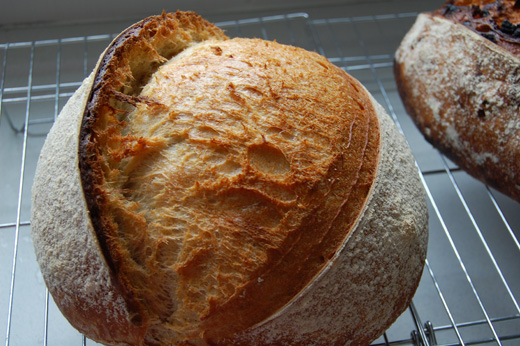

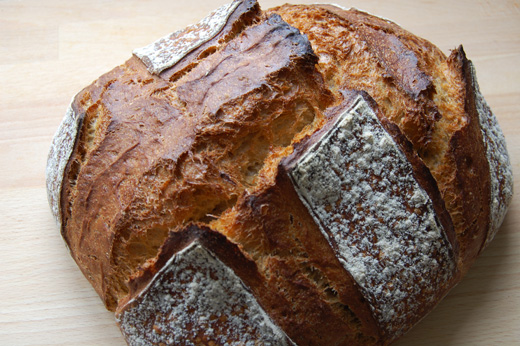



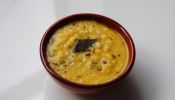


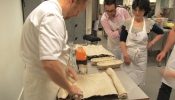














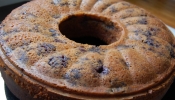


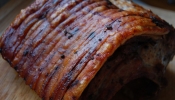

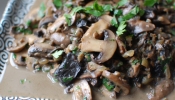

{ 14 comments… read them below or add one }
That is the pão-de-ló recipe right? You do not give the details but sounds like it. If you are doing pão-de-ló make sure you are NOT using any chemical raising, neither baking soda nor anything. It has to be plain flour and preferrably bread type, and bake it low and without overbaking it. The citrus juice might affect the ratio a bit (eggs, weight of eggs in sugar, half the weight in flour. Egg shells counted as part of the weight), I would add a bit more flour, and I always skip a bit on the sugar. But then again I do not really like pão-de-ló!
hi Teresa nice to hear from you – pão de ló follows the principals of a whisked sponge/fatless sponge/Genoese cake which is when the whole eggs are whisked until the protein in the egg yolks are stable which will hold the cake together like the ‘cement between bricks’ and therefore not collapse when out of the oven. This is why you have to whisk the whole eggs in a pão de ló recipe for a long time.
The yolks in this recipe are doing nothing but adding richness and colour to the cake and the egg whites are doing all the work of incorporating air into the cake…but egg whites cooked like this are unstable just like in a soufflé.
Is it something to do with the plain flour vs cake flour thing? Is it an American recipe? The only other thing is to try one of those pans which the cake sticks to, like chiffon cake tins and then you turn it upside down when it comes out of the oven and it stays put or something like that….. or make it in a panettone case with skewers through the bottom and hang it panetonne style… hee hee – here is me trying to give advice on cake rising – it’s not my area, so many disasters trailing in my wake, I should keep stumm
There are several versions of pão de ló I guess. The recipe in pão-de-ló I follow separates eggs (and beats yolks to very big white and fluffy, though no heating) and googling it seems pretty widespread to separate eggs – though I am finding some recipes that beat whole eggs. The Vaqueiro site has two recipes, one separated, one not. Now I am very curious about the different versions, must check the ultimate authority, Maria de Lurdes Modesto
But I think those proportions above ( with non-cake flour! and yolks very very beaten, as well as separately beaten egg whites) will not collapse much.
hi Joanna – love the idea of hanging it upside down, like your inventive way!
When I was writing up on the Ice-cream Freezing Too Hard and reading what happens to the structure of egg yolks I came across this information:
“The other action of whisking the syrup into the egg yolks is incorporating lots of air which will be stabilised by the egg protein, emulsifiers and fat globules.”
The yolks have to be whisked enough to set…this recipe was following the rules of a souffle!
hi Teresa – my mum follows the whole eggs method and she whisks them for a long time. Even with the separating the yolks they need to be whisked enough to ‘set’. I should look at the traditional Portuguese book I have see which way they do!
Hi Azelia, I think you would like the book Bakewise. I have had it from the library quite a lot and it teaches you how to develop baking recipes. The author is thorough in explaining why some recipes work and how to rescue those that don’t. I can tell you are not giving up yet!
hi Sarah – made me laugh…no not giving up! Dog with a bone! Thanks for the link I’m a sucker for any books with details. Having had a brief messaging exchange with another blogger who bakes cakes it all became clear to me how cakes fall into very few categories! Trying to decide whether I’m making MY version of the Clementine Cake today or tomorrow.
Can’t comment much on this one -not my arena- but I’d still bet you’re right about the souffle thing. I think Sarah’s suggestion about Corriher’s book, Bakewise is a good one for you, since you are really into knowing the ‘whys’ of the foods you do. Corriher has a degree in Bio-Chemistry, and is a well known authority on the ‘science’ of cooking/baking. I think you’d love her book – look for it in the local library. She also has authored one called, ‘Cookwise’, which covers all kinds of foods, including baked goods.
hi dr fugawe – She was on my amazon wishlist before christmas but ended up getting a food history book instead but turned out to be such a disappointment…I had Cookwise but now may change it to the Bakewise!
I have made and photographed and eaten my trusty old method of Genoise cake!
Oh, did your new experiment work? Wishing you good luck!
I was very curious and this weekend I checked the traditional pão de ló recipes, in the Cozinha Tradicional Portugal. Well, there were quite a few and a lot of variations. You are right in that most seem to beat eggs whole together, but not all, particularly the alentejo and trás-os-montes versions. the version I use is pretty close to the alentejo version, and it does not fall much.
The recipe Maria de Lurdes Modesto has for pão de ló in receitas escolhidas is brilliantly simple, I must now try it. Separated eggs, 1 tablespoon of sugar (beaten very fluffy with egg yolds) and one tablespoon of flour (folded gently along with beaten eggs whites later) for each egg. No baking powder or anything else. Oven warmed very hot but reduced to minimum ( must be 140 or something. Modern ovens can keep much lower temps) when cake introduced. Easier to scale up impossible and now I will try it next time ,
Wishing you good luck, keep trying!
thank you for the information Teresa – I have made a proper Genoise cake since then and like all true classics it came out well
A fabulous recipe for Clementine Cake is being shared around my neighborhood. When I looked it up on the web, I found your sad and complicated story. I have had repeated successes with the following recipe and have made it my ‘go to’ recipe whenever I need to make a delicious, moist, simple, butter/oil-less (and flour-less) cake:
Clementine* Cake
4 clementines in pot with cold water to cover
Bring to boil and cook for two hours, adding water as necessary.
Drain and cool. This may be made a day ahead
Remove seeds and puree – peel and all – in food processor.
* May be made with lemons, but increase sugar by 3 tablespoons.
Prepare 8″ spring form pan (butter+paper) and preheat oven to 375 degrees.
5 lg. whole eggs, at room temp (DO NOT SEPARATE).
Whisk until light, preferably with a mixer.
1 cup sugar
2 cups ground almonds, skins on or off
Almonds should be finely ground, but do not over process.
1 tsp. baking powder
[I combined the baking powder and almonds before adding to the eggs, to better
disperse the dry powder.
Add sugar, one tablespoon at a time. Blend well.
Add ground almonds and baking powder to eggs, alternating with pureed clementines.
Blend well.
Fill the 8″ pan with batter, up to 1/2″ below the rim. If you have excess, put in a buttered ramekin and place both on a cookie sheet in the center of the oven.
Bake for 40 minutes and cover with aluminum foil to keep from over-browning. Continue baking for 15 minutes, or until skewer comes out clean.
Let cool in pan on a rack. [To release from the pan, after it has cooled, I use a skewer – not a knife – to run around the sides].
This cake is perfect, just as it is, but you can gild it with a glaze or serve with whipped cream. Serves 10 – 12. Enjoy!
that is lovly, i bake but after three days the cake always go bad and what could be the cause.please reply thru this email thank you